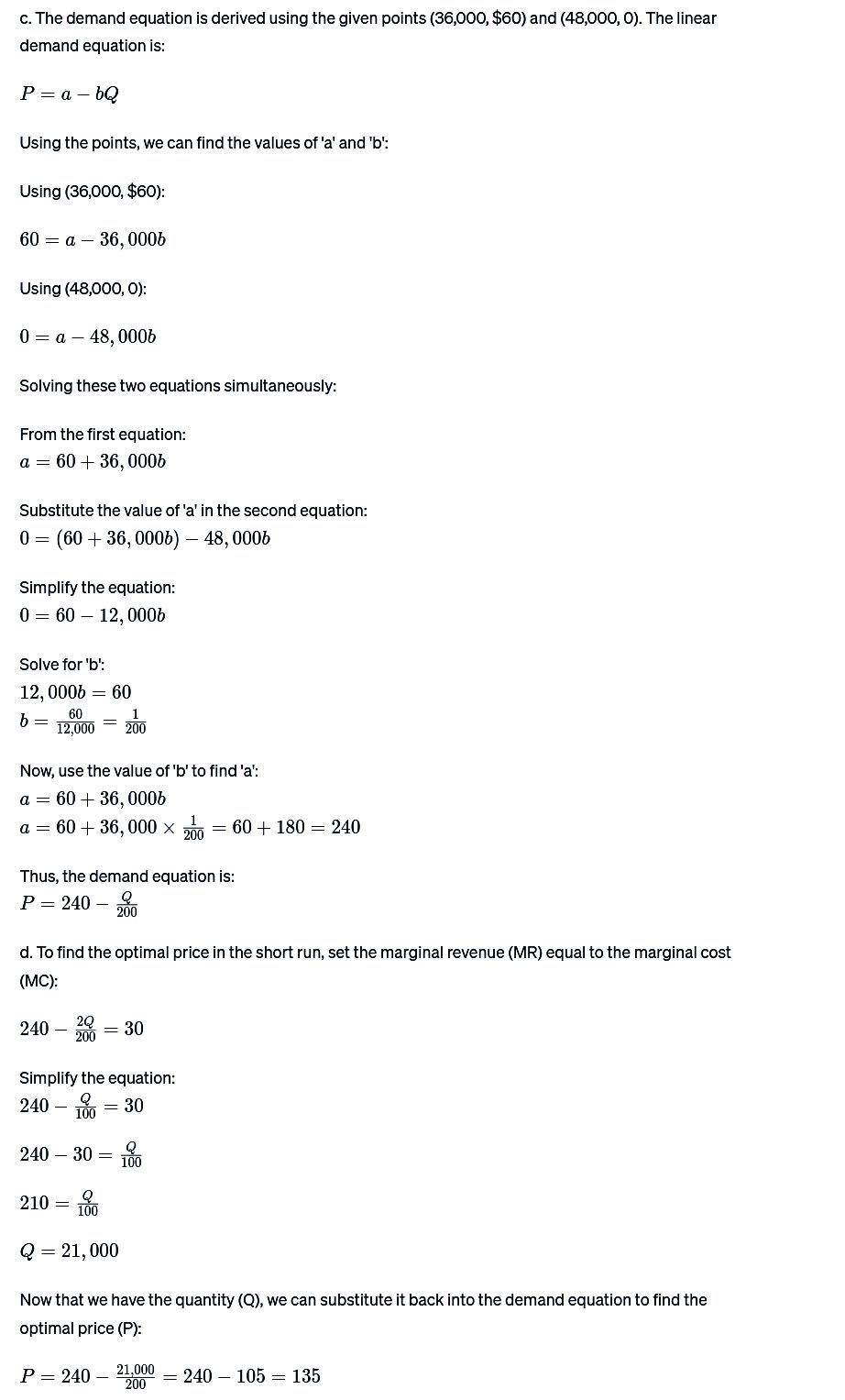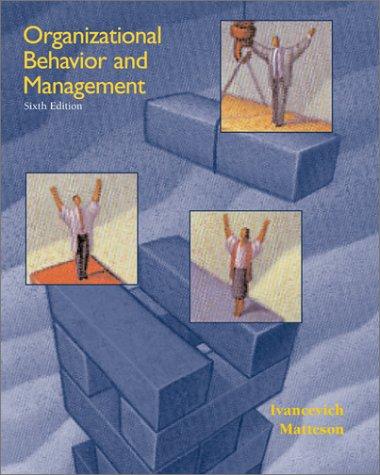Question
2. Rogue Creamery, located in Southern Oregon, has capacity to produce 48,000 pounds of Rogue River Blue cheese annually. In reality, it produces 36,000 pounds,
2. Rogue Creamery, located in Southern Oregon, has capacity to produce 48,000 pounds of Rogue River Blue cheese annually. In reality, it produces 36,000 pounds, which sells at $60 a pound. The marginal cost of producing a pound is $30. a. Assuming that Rogue Creamery prices optimally, what is the elasticity of demand for this cheese at the current price? b. Assuming that the demand curve is linear, derive the demand equation. c. Write down the inverse demand curve (P as a function of Q) and the marginal revenue curve. Verify that you would get the same optimal price and quantity using the "MR=MC" principle. Rogue River Blue won the top prize at World Cheese Awards, the first cheese from the United States to do so. This brought considerable interest to the products of the Creamery. Specifically, everyone's willingness to pay for Rogue River Blue cheese increased by $30 (Hint: This is equivalent to adding $30 in the inverse demand equation.) To make optimal pricing decisions after this demand shock, they have retained you as a consultant. They promised to pay you $1,000 for your services. d. Find the optimal price in the short run, i.e., before the Creamery has a chance to adjust its capacity. e. The CEO of Rogue Creamery proposes a plan, where a facility that currently produces a different kind of cheese would be repurposed for production of Rogue River Blue. It would increase the capacity by 12,000 pounds per year, to 60,000. This would result in $20,000 of foregone profits from the other cheeses per year. Would you approve this idea?
 c. The demand equation is derived using the given points (36,000, $60) and (48,000, 0). The linear demand equation is: P = a - bQ Using the points, we can find the values of 'a' and 'b': Using (36,000, $60): 60 = a - 36, 000b Using (48,000, 0): 0 = a - 48, 0006 Solving these two equations simultaneously: From the first equation: a = 60 + 36, 000b Substitute the value of 'a' in the second equation: 0 = (60 + 36, 000b) - 48, 000b Simplify the equation: 0 = 60 - 12, 000b Solve for 'b': 12, 0006 = 60 b = 1 60 12,000 200 Now, use the value of 'b' to find 'a': a = 60 + 36, 000b a = 60 + 36, 000 X 200 = 60 + 180 = 240 Thus, the demand equation is: P = 240 - 200 d. To find the optimal price in the short run, set the marginal revenue (MR) equal to the marginal cost (MC): 240 - 2Q 200 = 30 Simplify the equation: 240 - Q 100 = 30 240 - 30 = 100 210 = 100 Q = 21, 000 Now that we have the quantity (Q), we can substitute it back into the demand equation to find the optimal price (P): P = 240 21,000 200 = 240 - 105 = 135
c. The demand equation is derived using the given points (36,000, $60) and (48,000, 0). The linear demand equation is: P = a - bQ Using the points, we can find the values of 'a' and 'b': Using (36,000, $60): 60 = a - 36, 000b Using (48,000, 0): 0 = a - 48, 0006 Solving these two equations simultaneously: From the first equation: a = 60 + 36, 000b Substitute the value of 'a' in the second equation: 0 = (60 + 36, 000b) - 48, 000b Simplify the equation: 0 = 60 - 12, 000b Solve for 'b': 12, 0006 = 60 b = 1 60 12,000 200 Now, use the value of 'b' to find 'a': a = 60 + 36, 000b a = 60 + 36, 000 X 200 = 60 + 180 = 240 Thus, the demand equation is: P = 240 - 200 d. To find the optimal price in the short run, set the marginal revenue (MR) equal to the marginal cost (MC): 240 - 2Q 200 = 30 Simplify the equation: 240 - Q 100 = 30 240 - 30 = 100 210 = 100 Q = 21, 000 Now that we have the quantity (Q), we can substitute it back into the demand equation to find the optimal price (P): P = 240 21,000 200 = 240 - 105 = 135 Step by Step Solution
There are 3 Steps involved in it
Step: 1

Get Instant Access to Expert-Tailored Solutions
See step-by-step solutions with expert insights and AI powered tools for academic success
Step: 2

Step: 3

Ace Your Homework with AI
Get the answers you need in no time with our AI-driven, step-by-step assistance
Get Started


